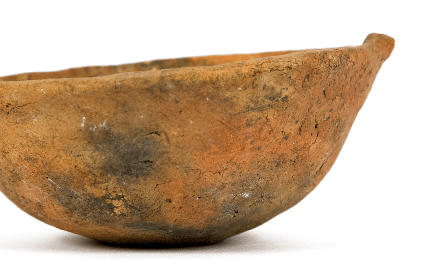
The Department of Bronze Age and Early Iron Age
The Department of Bronze Age and Early Iron Age In the Department of Bronze Age and Early Iron Age there are collected relics dating from about eighteenth to about third century BC. They come from more than 2.5 thousand archaeological sites, located mostly in the central and eastern Poland. Prevail large collections of ceramic relics - especially the pots acquired during the examination of cemeteries of the people of the Lusatian Culture and the Cloche Grave culture necropolis, located primarily in Mazovia region. The artifacts of the Department completes an interesting set of articles made of bronze (ornaments, tools, weapons), especially from the finds of numerous articles - so called "treasures", as well as objects made of iron, stone, flint, bone and antler. The most valuable and interesting relics, attributed to the people of Trzciniec culture, are the sets of bronze ornaments from Dratowo, county of Opole Lubelskie, Stawiszyce, county of Pińczów and sites in Mazovia such as in Rawa Mazowiecka and Żyrardów. The articles of the people of Lusatian Culture also represent mainly the ornaments, inter alia great clips from Świdnica, county of Świdnica and Strzyżów, county of Hrubieszów and an equally impressive armlets, shin-guards, necklaces and earrings from the "treasures" from Gośniewice and Ginetówka, county of Grójec, Kisielsk, county of Łuków, Kluczewo, county of Płońsk, Woskowice Małe, county of Namysłów, Złaków Borowy, county of Łowicz, Słupia, county of Kielce. In addition the collections of the Department of Bronze Age and Early Iron Age include items from the old collections and research carried out at the eastern fringe of the Second Republic (of Poland). These relics include artifacts extracted from the Scythian burial mounds, including a significant number of bronze arrowheads, found in Podolia region Kimmerian decorated cauldron, made of decorated copper plates, articles from the eponymic cemetery from the Wysock culture. The staff of the department is carrying out active field activities. As a result, of undertaken in the recent years, rescue excavations, the collections have been greatly enriched of the relics of the Lusatian Culture, Pomeranian culture and the Cloche Grave culture. The newly acquired collections are gradually being elaborated.